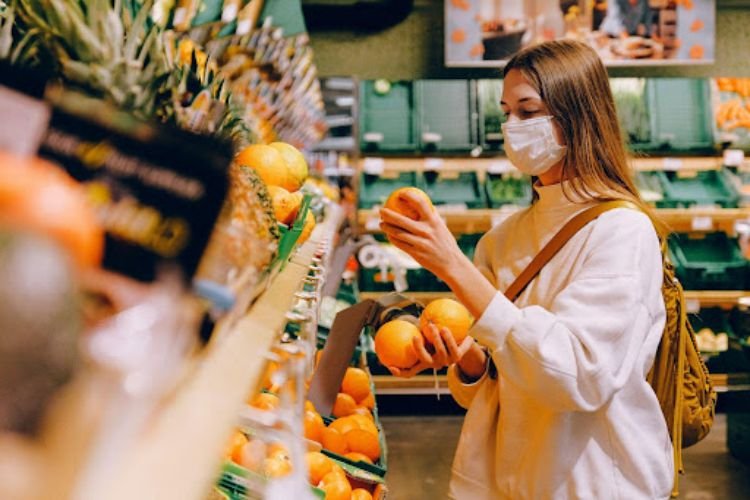 The world was turned upside down in 2020 with the onset of a global pandemic. The mandatory lockdowns and quarantines have shifted the way people think about receiving their goods. When the pandemic first hit, panic buying led to a lack of necessities. When states started moving towards a lockdown, people were afraid to leave their homes to purchase the necessary items. Now, with the slow return to a post-pandemic “normal” the trends for shopping have altered, probably for the foreseeable future.
The world was turned upside down in 2020 with the onset of a global pandemic. The mandatory lockdowns and quarantines have shifted the way people think about receiving their goods. When the pandemic first hit, panic buying led to a lack of necessities. When states started moving towards a lockdown, people were afraid to leave their homes to purchase the necessary items. Now, with the slow return to a post-pandemic “normal” the trends for shopping have altered, probably for the foreseeable future.
The way consumers shop isn’t the only thing that has changed, what they buy and prioritize is shifting as well. With the economy in a decline, and fewer chances to spend extravagantly, people have started to change their habits to fit what is most important to their lives.
Spending Habits
The biggest change was a bump in grocery sales as people got used to cooking and eating at home. In a recent study, 43 percent of people said they expect to continue cooking at home more than before the pandemic. There is still some uneasiness with spending too much time inside, so eating out is a luxury many are forgoing for the time being.
Travel is becoming a priority again, although at the moment air travel and international traveling are still a concern for many people. Studies have shown that retail sales are up because of the ease in workplace restrictions and more socialization happening in person. These trends are all outlined in this article.
Consumer reports also show an increase in spending on at-home entertainment, such as streaming services, traditional activities such as reading and gardening, as well as alcohol. These increases were all cited due to boredom. More money is being invested in creating a more comfortable environment at home, rather than spending it outside of the home.
Mobile Checkout
As people were uncomfortable using traditional checkout processes during the pandemic, retailers and shops had to adapt to the needs of their consumers. Giving the customers the option to scan their products and pay all with their smartphones created a safer, quicker shopping experience.
An increase in using mobile apps throughout all generations began during the pandemic. As the needs arose, companies were pushing new technological advances on their mobile and app-based platforms. These pushes are expected to continue as the ease of app-based shopping becomes more and more common.
In-Store and Curbside Pickups
Curbside services became wildly popular during the lockdown, allowing people to order online and have it delivered to a parking spot. Now, as in-store shopping is picking back up, stores are shifting their pick-up locations inside so people can still browse and shop around.
A recent survey about current consumer trends showed that 90 percent of shoppers enjoy going inside the store when picking up an order. These reports cite that picking up products in the store will continue to grow in popularity as more people get comfortable going back into stores.
Since the covid hit, stores reached a wider range of people by offering more ways to safely shop, catering to everyone’s comfortability levels. These options will continue, giving more ways to get products into the customers’ hands. Providing in-store pickup, curbside delivery, and store-to-door delivery options, consumers can get online or on an app and have multiple ways to get their products.
 In-Person Shopping
In-Person Shopping
Shopping in person has become an experience instead of the mundane. Now, with all the ease of digital shopping, going to a store has become exciting again. After staying at home for months, people are excited to get out in the world and touch, feel, and see things again.
Most consumers have admitted to wanting a hybrid shopping experience, combining online shopping with an in-person trip. This means that in-person shopping can be elevated to less of an errand feel, and more of an entertaining, social experience. This is evident with all-inclusive shopping experiences like the ones found here: https://www.discoverpinecrest.com/. After a couple of years of isolation and shopping online, consumers are changing their mentality on the need of going out shopping versus the luxury of in-person shopping. As stores and shops recognize that perspective shift, shopping malls and brick-and-mortar stores will change their shopping experience to match what the consumer wants.
Since early 2020, people have had to adapt to nearly every aspect of their lives, from social interactions, to work environments, to the way they shop. These changes, while intense at the beginning, have led to advances in the way we consume products. We, as consumers, now have more options on how to shop, which has given us the chance to see shopping as an experience, rather than just a necessity. These experiences are catered more to the individual and their needs and want, rather than a cookie-cutter experience. As things move to our new “normal,” the changes we made to our shopping habits will continue with slight adaptations as we get more comfortable leaving our homes again.




